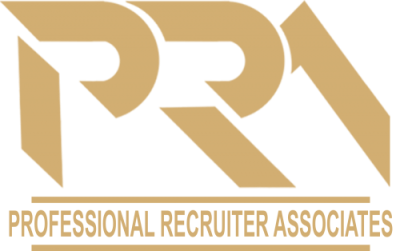Improve Workplace Culture With A Strong Mentoring Program
 Workplace
Workplace
Article Link: https://www.forbes.com/sites/nazbeheshti/2019/01/23/improve-workplace-culture-with-a-strong-mentoring-program/#1938343a76b5
By: Naz Beheshti
Employees are happy, engaged, and productive when their individual needs and the needs of the organization are in sync. The extrinsic rewards of salary and benefits might be enough to get top talent in the door, but it will not be enough to retain employees or to bring out their best efforts. Employees reach their full potential when their job also brings intrinsic rewards—the feeling of doing meaningful work that is connected to their own personal and professional development.
A good mentor can be a bridge between individual and organizational needs, between extrinsic and intrinsic rewards. January is National Mentoring Month, initiated in 2002 by the Harvard School of Public Health as a way to encourage youth mentoring. It is also an excellent time for leaders to reflect on the value of mentoring within their organization.
Mentoring programs have become mainstream. About 70% of Fortune 500 companies have one (although only a quarter of smaller companies do). However, according to some observers, a formulaic, one-size-fits-all approach can do more damage than good. Moreover, a Harvard Business Review study of 30 professional firms found that, in a hypercompetitive world, it is easy for mentoring programs to become stale and bureaucratic.
A win-for-all
One of the most impressive things about an effective mentoring program is how far the positive ripple effects reach. Mentoring benefits an organization by improving job satisfaction and retention, and aids in the personal and professional development of the mentee. Moreover, mentors themselves seem to gain just as much.
An in-depth case study at Sun Microsystems is a good illustration:
- Employees who participated in the program were five times more likely to advance in pay grade, and mentors made even more progress.
- Mentees were promoted five times more than those not in the program, and mentors six times more.
- Retention rates were significantly higher for mentees (72%) and for mentors (69%) than for employees who did not participate (49%).
Effect on diversity
Diversity and inclusion are significant challenges facing today’s workplace. All too often, and for a variety of reasons, workplace diversity programs are not successful. The good news is that mentoring programs have the best track record at making diversity a reality.
Cornell University’s School of Industrial and Labor Relations found that mentoring programs boosted minority representation at the management level by 9% to 24% (compared to -2% to 18% with other diversity initiatives). The same study found that mentoring programs also dramatically improved promotion and retention rates for minorities and women—15% to 38% as compared to non-mentored employees.
Types of mentoring
The overall mentoring program you adopt needs to be tailored to the specific needs and objectives of your organization. It also should take into account the individual employee and where there are in their personal and professional journey.
Generally speaking, there are three broad areas of mentoring:
- Peer mentors – often the best approach for a new employee, this is someone to introduce a mentee to organizational culture and show them the ropes.
- Career mentors – where the mentor also serves as a coach, and as a kind of internal advocate who helps the mentee meet their professional goals.
- Life mentor – a sounding board who can help us integrate our professional development with our larger life journey.
It should be noted that these three types of mentoring are not mutually exclusive and that the same mentor can be of assistance in all three areas. While new employees are probably best off with a mentor within the organization, executives and CEOs may benefit from an outside voice—either a colleague facing comparable challenges in another organization or an executive coach.
Keys to a successful mentoring program
First and foremost, mentoring must be personal and not bureaucratic. If the program comes across as another obligatory HR program, mentees and mentors are likely to resent it or merely go through the motions.
According to Tammy Allen, author of Designing Workplace Mentor Programs, pairing an employee with the right mentor is the trickiest aspect of mentoring, and the one we know the least about. Some organizations use algorithms similar to those used by dating services, while others go for more random methods. The most effective programs give participants some input or choice—for example, suggesting three possible mentors and then letting the employee choose.
Clear expectations are also essential. The very term mentoring may carry different connotations for different people. Mentees should understand that it is not an automatic path to promotion, but instead an investment in their personal and professional growth. Mentors should know that their time is valued and that the benefits of mentoring are reciprocal.
Finally, some kind of suggested format or structure is helpful to get the mentoring relationship off the ground. If it is not part of a regular, ongoing conversation, you will never achieve the rapport necessary for successful mentoring. On the other hand, it is wise to allow the pair to customize their arrangement in a way that best suits them both.
A generation ago, mentoring was often built into the employer-employee relationship. A boss could be expected to see an employee as their protégé, not only supervising them but helping to steer their career. As that relationship has changed, companies are searching for other ways to create a meaningful connection with their employees. A strong mentoring program is a smart initiative for aligning your employees’ individual purpose with that of your organization. With those two interests in sync, your workplace culture will flourish.

Professional Recruiter Associates